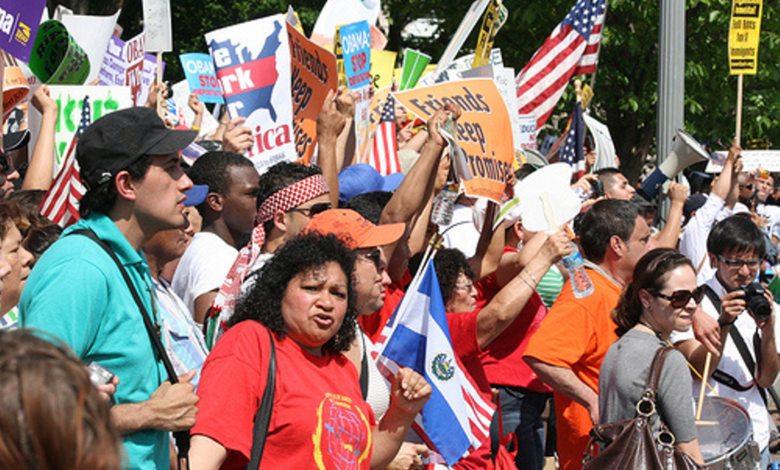Understanding the 2024 Immigration Reform Proposals
Explore the 2024 immigration reform proposals in the US, covering pathways to citizenship, border security, and legal implications.

Current Immigration Landscape in the US
To understand the proposed reforms, it’s crucial to grasp the current state of immigration in the US. The existing framework includes a blend of visa categories, pathways to citizenship, and measures for border security and undocumented immigrants.
Overview of Proposed Immigration Reforms
Reforming Visa Categories
Under the new proposals, adjustments in visa categories are anticipated to streamline processes and align with economic and social priorities.
Changes in Family-Based Visas
Proposals suggest enhancements in family-based visa allocations, aiming to reduce wait times and reunite families more efficiently.
Modifications in Employment-Based Visas
Employment-based visas are likely to undergo revisions to better meet workforce demands and support economic growth initiatives.
Pathway to Citizenship
Central to the reforms is the establishment of a clearer pathway to citizenship for undocumented immigrants and temporary residents.
Criteria and Eligibility
The criteria for eligibility are expected to be redefined, focusing on contributions to the community, proficiency in English, and adherence to US laws.
Integration Programs
Integration programs will be bolstered to facilitate the assimilation of new citizens into American society, promoting cultural understanding and civic engagement.
Border Security Measures
Proposed measures include advancements in technology and infrastructure to fortify border security and regulate the flow of immigration.
Enhancing Border Surveillance
Technological advancements will play a pivotal role in enhancing surveillance capabilities along the US-Mexico border, ensuring effective monitoring and response to potential threats.
Upgrades in Border Infrastructure
Investments in infrastructure will aim to modernize border entry points, improving efficiency and security protocols.
Addressing Undocumented Immigrants
The proposals outline provisions for undocumented immigrants already residing in the US, offering paths towards legal status and inclusion.
Temporary Protected Status
Extensions and expansions of Temporary Protected Status (TPS) are under consideration to shield vulnerable populations from deportation during crises.
Amnesty Programs
Amnesty programs may be introduced to provide a legal framework for undocumented immigrants to regularize their status, contributing positively to society.
Economic Impact Assessments
Comprehensive economic impact assessments will accompany the reforms, projecting fiscal implications and soliciting feedback from stakeholders.
Projections and Forecasts
Experts will analyze the potential economic benefits and costs associated with the reforms, informing policymakers and the public alike.
Stakeholder Perspectives
Input from various stakeholders, including business leaders, advocacy groups, and affected communities, will shape the final implementation strategies.
Challenges and Controversies
While the proposed reforms aim to address longstanding issues, they are not without challenges and controversies.
Political Opposition
Political factions with differing ideologies may oppose certain aspects of the reforms, leading to legislative hurdles and delays.
Public Perception
Public opinion on immigration reforms can vary widely, influenced by factors such as economic conditions, cultural attitudes, and media portrayal.
Legal Implications
The 2024 Immigration Reform Proposals carry significant legal implications that could shape their implementation and effectiveness. One of the primary concerns revolves around the constitutionality of various provisions within the proposed reforms. Legal challenges may arise regarding the criteria for eligibility, the scope of executive authority in implementing changes, and potential conflicts with existing immigration laws. For example, debates could emerge over the extent to which administrative actions can modify pathways to citizenship or alter visa categories without congressional approval.
Comparative Analysis with Previous Reforms
Comparing the 2024 proposals with past immigration legislation provides valuable insights into the evolution of US immigration policy.
Contrasts with Past Legislation
Notable differences in scope, approach, and political dynamics distinguish the current proposals from previous attempts at reform.
Lessons Learned
Lessons from past successes and failures in immigration reform will guide policymakers in crafting effective and sustainable solutions.
Future Outlook and Predictions
Looking ahead, the implementation of these reforms will shape the future of immigration policy in the US and beyond.
Implementation Timeline
Expect a phased approach to implementation, with initial measures likely to be rolled out within the first year. Subsequent adjustments and expansions may follow over the next several years.
Potential Adjustments
Flexibility will be key as policymakers monitor outcomes and make necessary adjustments to optimize the reforms’ effectiveness.
Global Implications
The US immigration policies will influence international relations and migration patterns, with implications for global humanitarian efforts and diplomatic engagements.
Adjustments Based on Feedback
Policymakers will monitor feedback and outcomes closely, making necessary adjustments to enhance the effectiveness and fairness of the reforms.
Economic Integration
The reforms aim to facilitate the economic integration of immigrants, potentially boosting sectors facing labor shortages and contributing to overall economic growth.
Legal Challenges
Anticipate legal challenges concerning the constitutionality of certain provisions, potentially leading to judicial reviews and interpretations that could impact implementation.
Long-term Societal Impact
Over the long term, these reforms could reshape societal dynamics, fostering greater diversity, inclusivity, and cultural enrichment within American communities.
Read More: Labor Law Changes: What Businesses Should Expect in 2024
Conclusion
As the debate over the 2024 immigration reform plans comes to an end, it is clear that these plans are a big move in the right direction towards solving persistent problems with the US immigration system. Policymakers seek to establish a more equitable and effective framework by striking a balance between issues related to border security, citizenship processes, and the treatment of illegal immigrants. The reforms reflect a complex approach to immigration policy that aims to harmonise economic, humanitarian, and security imperatives while fostering inclusion and preserving national security.
It is certain that these reforms will be scrutinised and challenged in the future, from a political and legal standpoint. Over time, the results and efficacy of these reforms will be greatly influenced by public opinion, the effects of the economy, and practical concerns. The 2024 immigration reform proposals, although their complexity, provide a route forward for a more responsive and unified Immigration Reform that fits the changing needs and ideals of the US.
FAQs
What are the key objectives of the 2024 immigration reform proposals?
The key objectives include enhancing border security, providing pathways to citizenship, and addressing the status of undocumented immigrants.
How will the reforms impact undocumented immigrants already in the US?
The reforms aim to offer pathways to legal status, potentially through temporary protected status extensions and amnesty programs.
What role do economic assessments play in shaping the reforms?
Economic assessments help project the fiscal impacts of the reforms and guide policymaking decisions.
How does public opinion influence Immigration Reform changes?
Public opinion can influence the political landscape, affecting the prioritization and implementation of immigration reforms.
What are the potential legal challenges facing the proposed reforms?
Legal challenges could arise concerning the constitutionality of certain provisions and interpretations of existing Immigration Reform.











